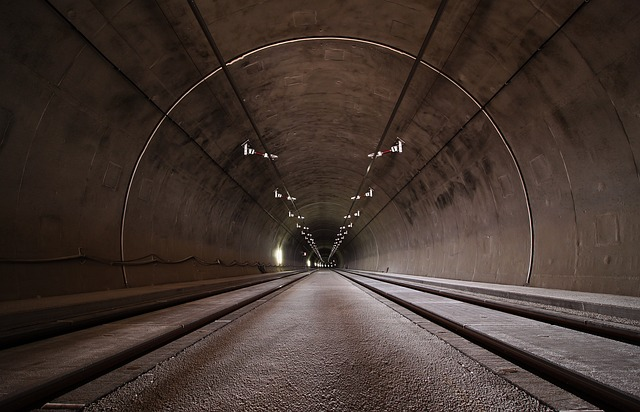Driving requires constant attention and a higher degree of caution, especially during unfavorable weather conditions. Truck drivers, in particular, are required to exercise extra care due to the size and potential dangers associated with their vehicles. One of the most perilous situations any driver can encounter on wet roads is hydroplaning, also known as "skimming."

The Dangers of Hydroplaning Accidents
Hydroplaning, a nerve-racking experience for even the most seasoned driver, occurs when standing water on the roadway hinders the vehicle's tires from maintaining contact with the surface. In such scenarios, the vehicle essentially skates across the standing water, creating an exceptionally hazardous situation other drivers.
Tractor Trailers and Hydroplaning
Though lighter cars tend to crash and hydroplane more frequently than other vehicles due to their increased likelihood of lifting away from the road at a slower speed than higher speeds, large vehicles such as tractor trailers are not immune car hydroplanes. The right circumstances can cause even these massive vehicles to hydroplane.

The Phenomenon of Hydroplaning
As rainwater collects on the roads, vehicles traveling at high speeds can end up "skimming" or hydroplaning on the water layer. The car' tires fail to lose traction in excess water or to keep tire pressure to grip the road, causing the vehicle to glide uncontrollably on the water's surface. It's akin to ice-skating, but with far more dire crash consequences.
Hydroplaning in Different Vehicles
Hydroplaning in Light Cars
Lighter vehicles are more susceptible to hydroplaning. Their relatively lighter weight, coupled with high speeds, can cause them to lift from the already wet roadways and glide on water. Can you imagine being on an ice rink with your car? Scary, isn't it?
Hydroplaning in Large Vehicles
But don't be fooled into thinking heavier vehicles are safe. Large vehicles, such as tractor-trailers, can also hydroplane. Their massive weight might make it less likely, but under the right circumstances, they too can turn into uncontrollable behemoths on waterlogged roads.

Liability in Hydroplaning Accidents
Determining at fault, and who's at fault in a hydroplaning accident isn't always straightforward. The one-car accidents often place the blame and fault squarely on the driver's ability. After all, aren't drivers expected to adjust their driving to the conditions?
Single-car Crashes and Liability
In most single-vehicle accidents, the driver typically is at fault party bears the responsibility for car crash. Contesting that poor road conditions contributed to the car accident also doesn't often hold much sway.
Role of Road Conditions in Liability
However, if you can convincingly demonstrate that you were driving cautiously and still experienced an serious car accident caused due to poor road conditions, you might be able to shift the blame single car accident away from other parties and from yourself. Photos of the accident scene could be instrumental in such a case.

Faulty Road Design or Maintenance
Faulty road designs or poor maintenance can contribute to hydroplaning accidents. If a specific road seems to be a common spot for such car accidents caused avoid hydroplaning, it might point to a design flaw. Inadequate drainage and overflow control around highways is a notable hazard in hydroplaning collisions. Should a local municipality or government agency be responsible for maintaining that section of the road, consulting with an attorney might be in your best interest
Filing a Lawsuit for a Hydroplane Accident
Should you find yourself in a hydroplaning accident, your response can significantly influence the outcome. Rash actions such avoid driving recklessly such as panic braking, sudden swerving, or attempting to stop abruptly can exacerbate an already precarious situation.

Safe Response to Hydroplaning
The best to lose control or reaction when hydroplaning is to calmly take your foot off the gas pedal, allowing the vehicle to decelerate until the car's tires regain traction with the road. Attempting to steer while hydroplaning may cause steering wheel of other driver in the vehicle prevent hydroplaning to spin, leading to complete loss of control.
Panicking and Accidents
Remember, panic can transform a manageable situation into a catastrophe. Instead of trying to forcefully regain control, it's best to let the vehicle naturally slow down. It may feel counterintuitive, but it can make the difference between a scary experience and a disastrous car accident itself.
Proving Negligence in a Hydroplaning Accident
If a driver can demonstrate that they didn't act negligently and that the accident resulted from worn tires or unsafe road conditions, they might be able to seek damages to avoid liability for their personal injury in a hydroplaning accident. Proving such circumstances can be challenging, hence the need for experienced attorneys to explore the legal options available to accident victims.
Role of Worn Tires and Unsafe Road Conditions
Worn tires, wet pavement or a hazardous road condition can cause a vehicle to hydroplane, causing an accident. An experienced attorney can help gather evidence and build a strong case to demonstrate that these factors were the primary cause of the hydroplane accident.

Conclusion
In conclusion, hydroplaning is a serious risk for all drivers, including those operating heavy vehicles like tractor-trailers. Drivers are expected to adapt to road conditions, but in some cases, factors outside their control, such as road defects such as poor road design or maintenance, can contribute to hydroplaning car accident or to an accident. Therefore, understanding how to respond when hydroplaning occurs can save lives and potentially help drivers avoid liability.
FAQs
Q1: What is hydroplaning?
A1: Hydroplaning, also known as skimming, is a situation where a layer of water on wet surface of the roadway prevents a vehicle's tires from maintaining contact with the wet road or the road surface below, causing the tires rotated the vehicle to slide uncontrollably.
Q2: Can large vehicles like tractor trailers hydroplane?
A2: Yes, under the right conditions, even large vehicles like tractor trailers can hydroplane.
Q3: Who is liable in a hydroplaning accident?
A3: In most accident cases, the driver is held liable for serious injuries. However, certain circumstances, like poor road conditions bad weather or design, could shift the liability.
Q4: How should a driver react when hydroplaning?
A4: The safest response is to take the foot off the gas pedal and drive slowly allow the vehicle to naturally slow down until the car's tires regain traction with the road.
Q5: Can I have an accident insurance company avoid liability in a serious accident or hydroplaning car accident again?
A5: Yes, it's possible to avoid liability if you can prove that the accident was an accident caused by factors beyond your control or personal injury, such as faulty, road construction or design, poor maintenance, or worn tires. However, this requires substantial evidence, and an experienced attorney can be instrumental in such cases.

